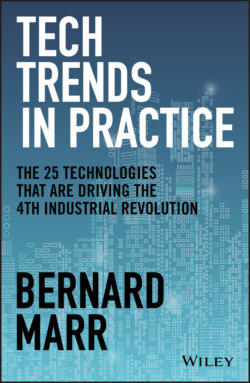Читать книгу Tech Trends in Practice - Бернард Марр, Bernard Marr - Страница 40
Improving Human Strength and Balance
ОглавлениеExoskeletons – essentially, wearable robot suits – already exist that help workers become super-strong. For example, the Sarcos Guardian XO exoskeleton is a full-body suit that lets workers in, say, factory and construction settings lift up to 90 kilograms without strain. Sarcos says the technology will help to increase productivity and reduce workplace injuries. In case you’re wondering what a “full-body suit” looks like, picture the get-up Ripley wore for her epic alien fight in the movie Aliens, and you won’t be far off!
In 2018, Ford confirmed it was rolling out 75 EksoVest upper-body exoskeletons in a number of its auto plants around the world – at the time of writing, the largest adoption of exoskeletons to date.5 Volkswagen is also exploring rolling out rival exoskeletons at its plants.6
There are actually many different types of exoskeletons, and not all of them designed with industrial super-strength in mind. Many are designed for clinical rehabilitation purposes, for instance, by helping to provide support to the hips, legs, and lower torso. The Rewalk Robotics Restore soft exoskeleton, which is designed to help stroke patients walk effectively and efficiently, is a good example.
MIT has developed a robot that can understand signals from your muscles and respond accordingly, to help you lift heavy objects. The mechanical system works by reading the electrical signals from your biceps – measuring your flex, in other words – to get a sense of how you’re lifting. It can then work out how best to help you lift. It might not be for the squeamish, though, since it requires electrodes to be inserted into your arm!7
If you don’t fancy electrodes in your arm, how about a robotic tail? Designers in Japan have developed a robo-tail that straps around the waist and helps improve people’s balance.8 It’s not commercially available, but the designers predict robo-tail technology could in future help with rehabilitation or to augment balance for workers in dangerous locations, such as on a construction site.
